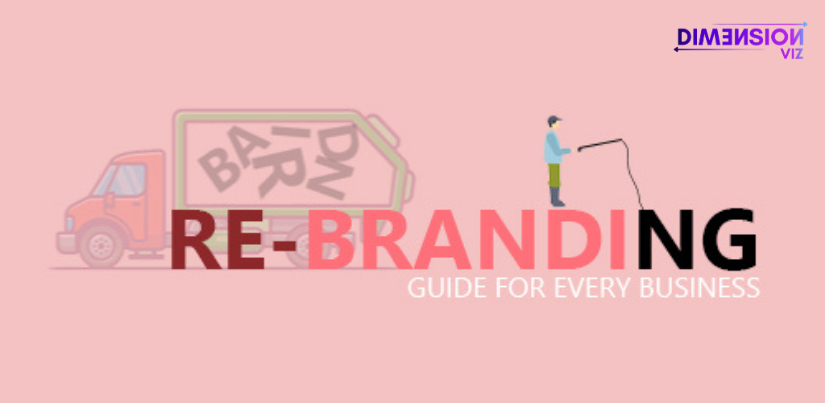Ultimate Rebranding Guide For Every Business
As businesses grow and expand, rebranding can become outdated and archaic. Most firms will eventually need to change their branding to make it more current, efficient, and relevant.
A brand tells people who your company is, what it stands for, what it does, and how it does it, which is why it’s important to keep your branding up to date regularly. It might be difficult to know when to begin rebranding or whether your firm needs to rebrand.
There are numerous reasons for your company to rebrand. It’s possible that your firm is seeking to reach new audiences that you want to distinguish yourself apart from competitors, that you need to stay current, that your company has grown, or that your organization has a bad reputation.
All of these factors, if achieved, can be useful to your business and allow it to finally prosper. Continue reading to learn about the keys to successful rebranding.
Phase 1: Gather Information And Conduct A Rebranding Audit
When it comes to rebranding, the first step is to undertake research. This can include gathering information about your brand’s target audience, such as age, location, gender, and interests. You should also look at the competition for your brand. Knowing your competition and their branding efforts might help you create a distinct brand.
Doing a brand audit is another technique to obtain vital information. A brand audit examines the present status of your brand to determine how you want it to evolve in the future. It can include questions like what your company does now, how your brand is seen now, and information about your brand’s current strengths and problems.
Phase 2: Create a Branding System
After you’ve completed your research and brand audit, you may begin developing your brand system, also known as the brand blueprint. This comprises the brand’s heart as well as its messaging.
Here’s a quick rundown of both, as well as what they entail.
Heart of the Rebranding
The brand heart of your firm influences how your brand presents itself to its audience as well as everything else it does. A motive, objectives, goals, and morals are all part of a brand’s heart. Here’s a rundown of what each of these terms means.
- Motive: Your brand’s motive explains why you exist. By creating a deeper emotional relationship between a company and its customers, having a brand mission gives you some crucial benefits over the competition. An example of Google’s brand mission is as follows: “To organize and make universally accessible and valuable the world’s information.”
- Objectives: The objective of the vision is a statement about the future you want to build. Instagram’s vision statement is a great example of a vision statement: “To record and share the world’s moments.”
- Goal: Goals are mission statements that describe what you hope to accomplish. “To help humanity thrive by enabling the world’s teams to work together seamlessly,” says Asana’s mission statement.
- Morals: A company’s morals/values drive its actions; they are the reason for its existence. A company’s values might reveal a lot about it. Everlane’s ideals, for example, include great quality, ethical manufacturing, and radical transparency.
Brand Message
The key characteristics of your business are captured in the brand message, which is enticing to your customers. An effective brand message can even aid in the development of a devoted client base. Let’s go over the three key components of the brand message.
- Slogan: Slogans, often known as taglines, have the power to linger in people’s minds and attract their attention. Taglines should be straightforward, succinct, and memorable. Apple’s tagline, for example, is “Think Different.”
- Differentiation: Differentiation also known as Value Propositions are concise statements that summarize what your firm does for individuals. Take a look at this value proposition from Uber: “Uber is the smartest way to get around”.
- Brand pillars: The essential elements that distinguish your firm are known as brand pillars. They can be values or traits that help people recognize and remember your brand. Hospitality, ethics, leadership, teamwork, and ownership are all aspects of the Hilton brand. The marketing efforts of the organization are all based on these brand pillars.
The brand heart and messaging of a firm have an impact on how it is viewed. Consider each of these factors carefully to ensure your rebranding efforts go more easily, especially since all of the modifications you make will be based on the brand system.
Phase 3: Revamp Your Brand’s Identity
Your organization will be ready to develop new content that represents the changes after redesigning its brand system. Changes include a new logo, colors, and typography. Logos should be straightforward, easy to comprehend, and memorable. The logo, as well as the colors and font you choose, should reflect the heart and message of your business.
If a logo needs to be redesigned, hire a graphic designer or an agency that has one. Finally, you’ll want to establish brand rules to ensure that every piece of content your firm produces appropriately reflects your brand.







